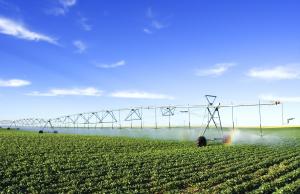
Tracking trends in national agricultural irrigation
By Jim Algie
Agricultural water use in Canada has varied widely in recent years mainly because of fluctuations in rainfall, Statistics Canada’s analysis and survey work shows.
The federal agency conducts agricultural water surveys as part of its Canadian Environmental Sustainability Indicators program. Data for the 2016 survey is scheduled for release in September 2017, a statement on the Statistics Canada website says.
Data for 2014 shows Canadian farmers used about 1.7 billion cubic metres of water to irrigate crops that year. This amount is about the same as the amount used in 2012, but the figure rose significantly since 2010, when total irrigation volume measured 838 million cubic metres.
The 2010 figure is almost half (44 per cent) of the volume used in 2007, Statistics Canada’s analysis says. The 2010 decrease in irrigation was particularly marked in Ontario and reflects relatively abundant rainfall that year, the report says.
The number of Canadian farms with irrigated crops dropped from 10,470 in 2007 to 7,685. In Ontario, only 995 farms reported irrigation in 2010; 1,990 farms reported it in 2007.
“The decrease (in irrigated farms) is due to the amount of rainfall received by the province,” the report says. During the 2007 growing season, southeastern parts of Ontario experienced about 85 per cent or less of its average precipitation. In 2010, the region received between 85 and 150 per cent of its average precipitation.
The 2014 survey data shows the Alberta irrigation volume of 1.3 billion cubic metres accounted for about three-quarters of all the irrigation water applied to Canadian crops. British Columbia’s irrigation water volume represented about 16 per cent of the total.
Field and forage crops accounted for 55 and 40 per cent, respectively, of total irrigation water usage; fruit (3 per cent) and vegetable crops (2 per cent) took up the rest.
Above-ground sprinkler irrigation was the most commonly reported method of irrigation in 2014; a total of 4,425 farms used it. Micro-irrigation, which includes surface and subsurface drip systems, was reported on 1,620 farms. A total of 650 farms reported surface irrigation, including row and furrow flooding.
Statistics Canada cautions readers about misinterpreting widely varying regional patterns in its published data. The agency also notes that the 2014 report was only the third in the irrigation series and cites the relatively short period of data collection and changes in methodology. Comparisons “should be made with caution.” BF

Photo credit: SteveMcsweeny/iStock/Getty Images Plus photo



Post new comment